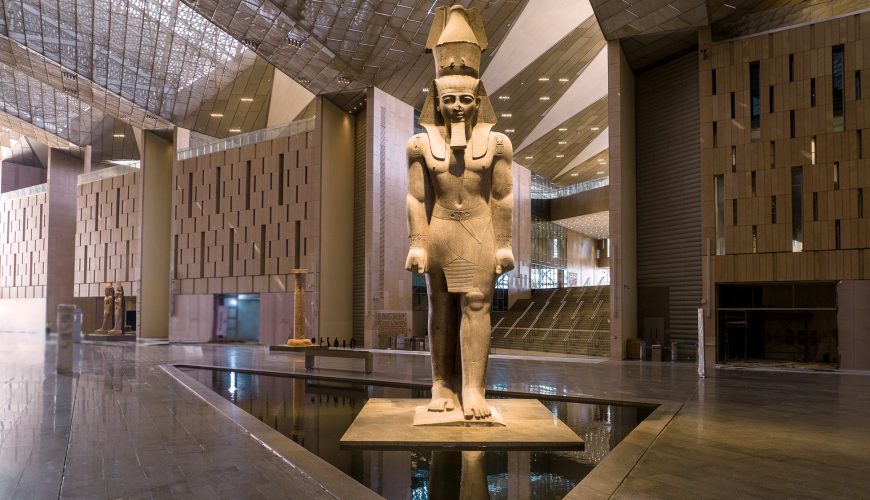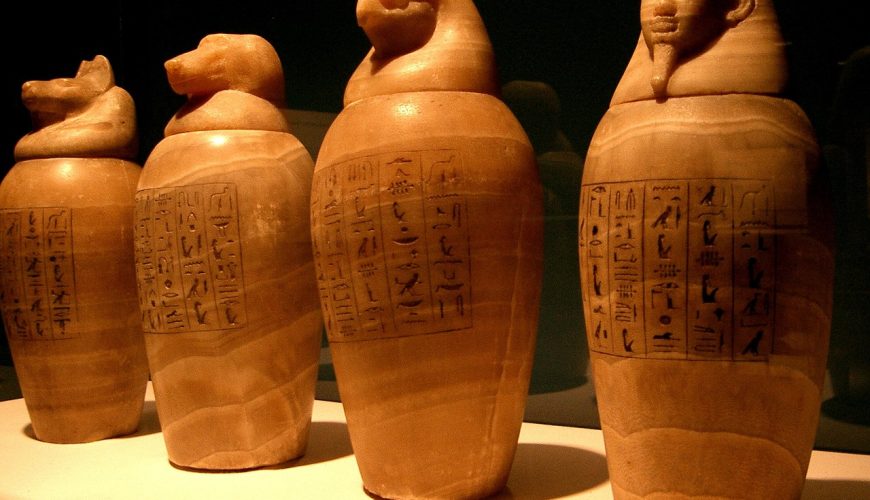The Grand Egyptian Museum (GEM), also known as the Giza Museum, is an ambitious and groundbreaking project located near the Pyramids of Giza, Egypt. Once completed, it will be one of the largest archaeological museums in the world, dedicated to showcasing Egypt’s rich and extensive ancient history. The museum aims to provide a modern and comprehensive space for the display, preservation, and study of Egyptian antiquities, positioning itself as a premier cultural and educational institution.
The Grand Egyptian Museum

History and Development
The idea for the Grand Egyptian Museum was conceived in 2002, with the goal of alleviating the congestion at the Egyptian Museum in Cairo and providing a state-of-the-art facility for the country’s vast collection of antiquities. An international architectural competition was held, and the design by the Dublin-based Heneghan Peng Architects was selected. Groundbreaking took place in 2002, and after years of planning, construction began in earnest in 2012.
The museum’s permanent exhibitions will take visitors on a captivating journey through millennia of Egyptian history. Wander through displays showcasing the Predynastic Period, the rise and fall of pharaohs, the Greco-Roman era, and everything in between.
Architecture and Location
The Grand Egyptian Museum boasts a staggering 81,000 square meters of floor space, dwarfing even the esteemed Egyptian Museum in Cairo. This vast expanse allows for the display of a staggering collection of over 100,000 artifacts, many of which have never been seen by the public before.
The museum is strategically located approximately 2 kilometers from the Giza Pyramid Complex, one of the most iconic ancient sites in the world. The design of the GEM is both monumental and innovative, incorporating a blend of modern architectural elements with cultural references to Egypt’s ancient heritage. Key features include:
- Triangular Motifs: The building’s design heavily features geometric and triangular motifs, echoing the form of the pyramids.
- Grand Atrium: A massive entrance atrium will house the colossal statue of Ramses II, creating an awe-inspiring welcome for visitors.
- Panoramic Views: Large windows and viewing platforms will offer breathtaking vistas of the nearby pyramids.
Exhibitions and Collections

One of the museum’s most anticipated attractions is the complete Tutankhamun collection. These treasures, discovered in 1922 by Howard Carter, will finally have a permanent home worthy of their significance. Prepare to be dazzled by golden sarcophagi, intricate jewelry, and stunning funerary objects.
The GEM will house an unprecedented collection of Egyptian artifacts, estimated to be around 100,000 items. Its exhibitions will span the entirety of ancient Egyptian civilization, from prehistory through the Greco-Roman period. Notable highlights include:
- Tutankhamun Galleries: The museum will feature the complete collection of artifacts from the tomb of Tutankhamun, many of which will be displayed together for the first time since their discovery.
- Comprehensive Exhibitions: Thematic and chronological exhibitions will provide in-depth insights into ancient Egyptian life, including religion, daily activities, and advancements in science and technology.
Research and Conservation
The GEM will also function as a major center for research, conservation, and education. Its state-of-the-art laboratories and research facilities are designed to advance the study and preservation of Egyptian antiquities. The museum aims to become a leading institution for Egyptology, attracting scholars and researchers from around the world.
Community and Cultural Engagement
The Grand Egyptian Museum is envisioned as a cultural hub that extends beyond the traditional museum experience. It will offer educational programs, workshops, and interactive experiences for visitors of all ages. The museum’s design includes spaces for temporary exhibitions, performances, and events, fostering a dynamic and engaging environment.
More Than Just Artifacts:
- Modern Storytelling: GEM goes beyond displaying artifacts; it aims to create an immersive experience. Expect state-of-the-art technology, multimedia presentations, and interactive displays that bring ancient Egypt to life.
- Thematic Galleries: Dedicated galleries will explore specific aspects of Egyptian life, such as mummification techniques, daily life of the common people, and the role of the Nile River. Prepare to be transported back in time.
Economic and Tourism Impact
The GEM is expected to have a significant impact on Egypt‘s tourism industry, drawing millions of visitors annually. Its proximity to the Giza Pyramids enhances its appeal, offering a comprehensive cultural experience that combines ancient history with modern innovation. The museum is anticipated to boost local and national economies, creating jobs and supporting various sectors related to tourism and culture.
The Grand Egyptian Museum represents a monumental endeavor to preserve and celebrate Egypt’s ancient heritage. With its cutting-edge design, extensive collections, and multifaceted approach to education and community engagement, the GEM is poised to become a global landmark in the world of museums and a testament to the enduring legacy of ancient Egypt. Once completed, it will not only honor the past but also inspire future generations to explore and appreciate the rich tapestry of human history.
The Grand Egyptian Museum is open Monday-Saturday (9 AM–10 PM), with extended hours during the summer season. Check their website for current opening hours and ticket information (The Grand Egyptian Museum).












0 Comment